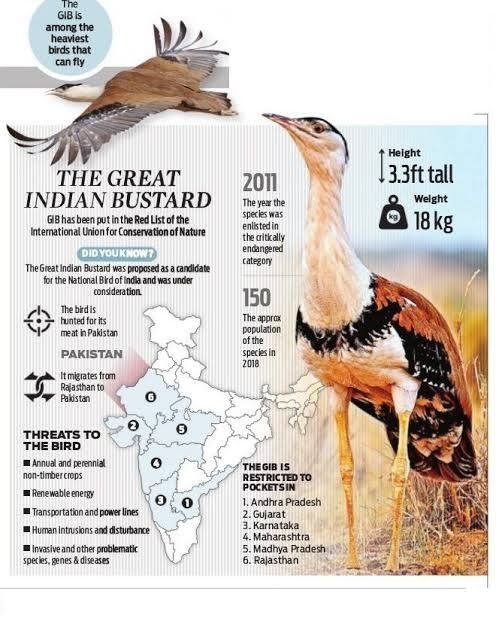Rajasthan
IVF Breakthrough for the Great Indian Bustard Conservation
- 23 Oct 2024
- 3 min read
Why in News?
Recently, a significant step was taken to save the critically endangered Great Indian Bustard (GIB) as a chick was successfully born through In-Vitro Fertilization (IVF), marking a major milestone in conservation efforts for the species.
Key Points
- IVF Success in Conservation:
- A Great Indian Bustard chick was successfully born through IVF, a first for the species, giving a major boost to ongoing conservation efforts aimed at saving this critically endangered bird.
- This breakthrough comes as the species faces severe population decline, largely due to habitat loss and collisions with power lines.
- The chick was born under the Species Recovery Programme at the Desert National Park in Rajasthan, which is home to the last remaining wild population of GIBs.
- In-Vitro Fertilization (IVF):
- It is a widely used assisted reproductive technology (ART) aimed at facilitating pregnancy when natural conception is difficult or impossible.
- It involves a series of steps designed to allow fertilization of an egg outside the body, in a laboratory setting, before implanting the embryo back into the female’s uterus. This process is now being applied in wildlife conservation, such as in the recent case of the Great Indian Bustard.
- Great Indian Bustard:
- Habitat: Grasslands of Rajasthan, Gujarat, Maharashtra, and parts of Karnataka.
- Conservation Status: Listed as "Critically Endangered" on the International Union for Conservation of Nature (IUCN) Red List.
Desert National Park
- It is situated on the western border of India within the Jaisalmer & Barmer Districts of Rajasthan.
- Great Indian Bustards, Rajasthan State animal (Chinkara), State tree (khejri) and State flower (Rohida) are found naturally at this park.
- It was declared a UNESCO World Heritage Site in 1980 and National Park in 1992.
Kutch Bustard Sanctuary
- The Kutch Bustard Sanctuary is located near Nalia in the Kutch district of Gujarat, India.
- It is the smallest sanctuary in the country, spread over just two square kilometres. The sanctuary, also known as the Lala-Parijan sanctuary, was declared in July 1992 primarily to safeguard the endangered Great Indian bustard.
- The sanctuary is home to three species of Bustards: the Great Indian bustard, lesser floricans, and the Macqueen bustard.





